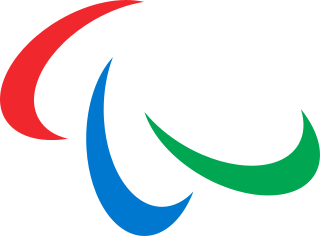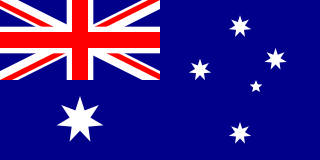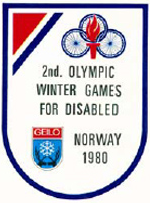
The 1994 Winter Olympics, officially known as the XVII Olympic Winter Games and commonly known as Lillehammer '94, were an international winter multi-sport event held from 12 to 27 February 1994 in and around Lillehammer, Norway. Having lost the bid for the 1992 Winter Olympics to Albertville in France, Lillehammer was awarded the 1994 Winter Games on 15 September 1988, two days before the 1988 Summer Olympics opening ceremonies at the 94th IOC Session in Seoul, South Korea. Due to the calendar changes made in 1986, this was the only time that the Winter Olympics took place two years after the previous Winter Games, and the first to be held in a different year from the Summer Olympics. This was also the first Winter Olympics to be held during the Commonwealth Games year. This was the second Olympic Games of any type hosted in Norway — the first being the 1952 Winter Olympics in Oslo — and the fourth Olympics overall to be held in a Nordic country, after the 1912 Summer Olympics in Stockholm, Sweden, and the 1952 Summer Olympics in Helsinki, Finland. Lillehammer is the northernmost city ever to host the Olympic Games.

The 1976 Winter Paralympic Games were the first Winter Paralympics. They were held in Örnsköldsvik, Sweden, from 21 to 28 February 1976. The disabilities included in this Paralympics were blindness and amputees. Sixteen countries took part with 196 athletes. There were competitions in Alpine and Nordic skiing for amputee and visually impaired athletes, and a demonstration event in ice sledge racing.

The 2010 Winter Paralympics, or the tenth Paralympic Winter Games, were held in Vancouver and Whistler, British Columbia, Canada from March 12 to 21, 2010. The opening ceremony took place in BC Place Stadium in Vancouver and the Closing Ceremony in Whistler Medals Plaza.

The 1994 Winter Paralympics, the sixth Paralympic Winter Games, were held in Lillehammer, Norway, from 10 to 19 March 1994. These Games marked the second time the Paralympic Winter Games were held in the same location as the Winter Olympics and with the first with the same Organizing Committee, a tradition that has continued through an agreement of cooperation between the International Olympic Committee (IOC) and the International Paralympic Committee (IPC). Ice sledge hockey, which became an immediate crowd favorite, was added to the program.

The 1998 Winter Paralympics, the seventh Paralympic Winter Games, were held alongside the Winter Olympics in Nagano, Nagano Prefecture, Japan from 5 to 14 March 1998. They were the first Paralympic Winter Games to be held in Asia. 571 athletes competed in Nagano; as 2022 it remains the highest number of athletes competing at any Winter Paralympics.

The 1976 Summer Paralympics, branded as Torontolympiad – 1976 Olympiad for the Physically Disabled, was the fifth Paralympic Games to be held. They were hosted by Toronto, Ontario, Canada, from 3 to 11 August 1976, marking the first time a Paralympics was held in the Americas and in Canada. The games began three days after the close of the 1976 Summer Olympics in Montreal.

The 1984 Winter Paralympic Games were the third Winter Paralympics. They were held from 14 to 20 January 1984 in Innsbruck, Austria. They were the first Winter Games organized by the International Co-ordinating Committee (ICC), which was formed on 15 March 1982, in Leysin, Switzerland. These Games were accessible for all athletes with cerebral palsy. Three sports were contested: alpine skiing, cross-country skiing, and ice sledge speed racing. The most successful athlete was German alpine skier Reinhild Moeller, who won 3 gold medals and 1 silver medal. The Games, then known as the 3rd World Winter Games for the Disabled, were fully sanctioned by the International Olympic Committee (IOC).

The 1988 Winter Paralympic Games were the fourth Winter Paralympics, held again in Innsbruck, Austria. These were the last Paralympics to be held in a separate location from the Olympics. Beginning in 1992, the Olympics and the Paralympics were held in the same city or in an adjacent city. These Paralympics were not held at the same Olympic venue in Calgary, Canada, because of financial and recruiting difficulties. A total of 377 athletes from 22 countries took part. The USSR competed for the first and only time. Sit-skiing was introduced as another event in both the Alpine and Nordic skiing competitions. Other sports were biathlon and ice sledge speed racing. Ice sledge speed racer Knut Lundstroem from Norway was the most successful athlete, winning four gold medals in the 100m, 500m, 1000m and 1500m events.

The 2006 Winter Paralympic Games, the ninth Paralympic Winter Games, took place in Turin, Italy from 10 to 19 March 2006. These were the first Winter Paralympic Games to be held in Italy. They were also the first Paralympics to use the new Paralympics logo.

The United Kingdom of Great Britain and Northern Ireland competed at the 2006 Winter Paralympics held in Turin, Italy. The team was known by it shortened name of Great Britain, for identification purposes.

The Winter Paralympic Games is an international multi-sport event where athletes with physical disabilities compete in snow and ice sports. The event includes athletes with mobility impairments, amputations, blindness, and cerebral palsy. The Winter Paralympic Games are held every four years directly following the Winter Olympic Games and hosted in the same city. The International Paralympic Committee (IPC) oversees the Games. Medals are awarded in each event: with gold for first place, silver for second, and bronze for third, following the tradition that the Olympic Games began in 1904.

Norway has participated in every edition of both the Summer and Winter Paralympics, except the second Summer Games in 1964. It was one of the seventeen countries to take part in the inaugural Paralympic Games in 1960 in Rome, where it sent a delegation of eleven athletes. Norway was the host country of both the 1980 Winter Paralympics, in Geilo, and the 1994 Winter Paralympics, in Lillehammer.

The 1984 Winter Paralympics, then known as The Third World Winter Games for the Disabled, were held in Innsbruck, Austria. The games took place from the 15 until 21 January. Present at these games were 419 athletes from 21 countries, Spain and the Netherlands competing for the first time in the Winter Paralympics, competing in 107 events across 3 sports. The inclusion of Les Austres and Cerebral palsy impairment groups contributing to the distinct increase in athlete participation with the total number of athletes jumping from 229 at Geilo, Norway in 1980.
Ice sledge racing is a Paralympic sport where contestants use a lightweight sledge and propel themselves using two poles. As a modern organized sport, it was available as a Paralympic sport between 1980–1988 and 1994–1998.

Following the success of the first ever 1976 Winter Paralympics in Örnsköldsvik four years earlier, Norway was selected to host the Paralympic Games in 1980.

Australia competed at the 1992 Winter Paralympics in Tignes and Albertville in France. They were the first winter Paralympics to be celebrated concurrently with the Olympic Games. The official logo of the Games was designed by Jean-Michel Folon. It depicts a bird with broken wings, soaring high across the peak of a mountain. This was used to reflect the sporting abilities of the athletes at the Games. The official mascot, Alpy, designed by Vincent Thiebaut, represented the summit of the Grande Motte mountain in Tignes. Alpy was shown on a mono-ski to demonstrate its athleticism and the colours of white, green and blue were used to represent purity/snow, hope/nature and discipline/the lake. The 1992 Games were where Australia won their first winter medals at the Paralympics. Michael Milton won Australia's first gold with a win in the men's slalom LW2. Milton also won a silver medal in the men's super-G LW2. At these Games, Australia was represented by 5 male athletes. Australia was placed 12th in the overall medal tally for the Winter Games winning a total of 4 medals: 1 gold, 1 silver and 2 bronze.

Australia competed at the 2002 Winter Paralympics in Salt Lake City, Utah, United States from 8 March to 19 March 2002. The Salt Lake Paralympics are the eighth such winter games, the first Winter Paralympics ever in North America and the first Winter Paralympics ever set up by an Olympic organizing committee. Although many of the Paralympic expenses were covered by dual planning with the Olympics, organizers still spent about $60 million on the Paralympics, including $5 million on the opening and closing ceremonies. The Salt Lake Games featured 92 events across four sports: alpine skiing, biathlon, cross-country, and ice sledge hockey. The 36 competing countries sent a total of 416 participants. Australia was represented by six male alpine skiers: Peter Boonaerts, Bart Bunting, Michael Milton, Scott Adams, Cameron Rahles-Rahbula, and Mark Drinnan. The medal haul was seven, consisting of six gold and one silver. Australia finished 8th overall in the gold and total medal count, making it the country's most successful Winter Games in terms of gold medals.

Canada competed at the 1980 Winter Paralympics in Geilo, Norway from 1 to 7 February 1980. Canada sent a team of 20 athletes in two of the three disciplines at the Games; eleven in Alpine skiing and nine in Cross-country skiing.

The United States competed at the 1980 Winter Paralympics in Geilo, Norway. 26 competitors from the United States won four gold medals, one silver medal and one bronze medal and finished 6th in the medal table. All medals were won in alpine skiing.

France competed at the 1980 Winter Paralympics in Geilo, Norway. 21 competitors won 3 medals, including 1 gold, 1 silver and 1 bronze. France finished 9th in the medal table.


















